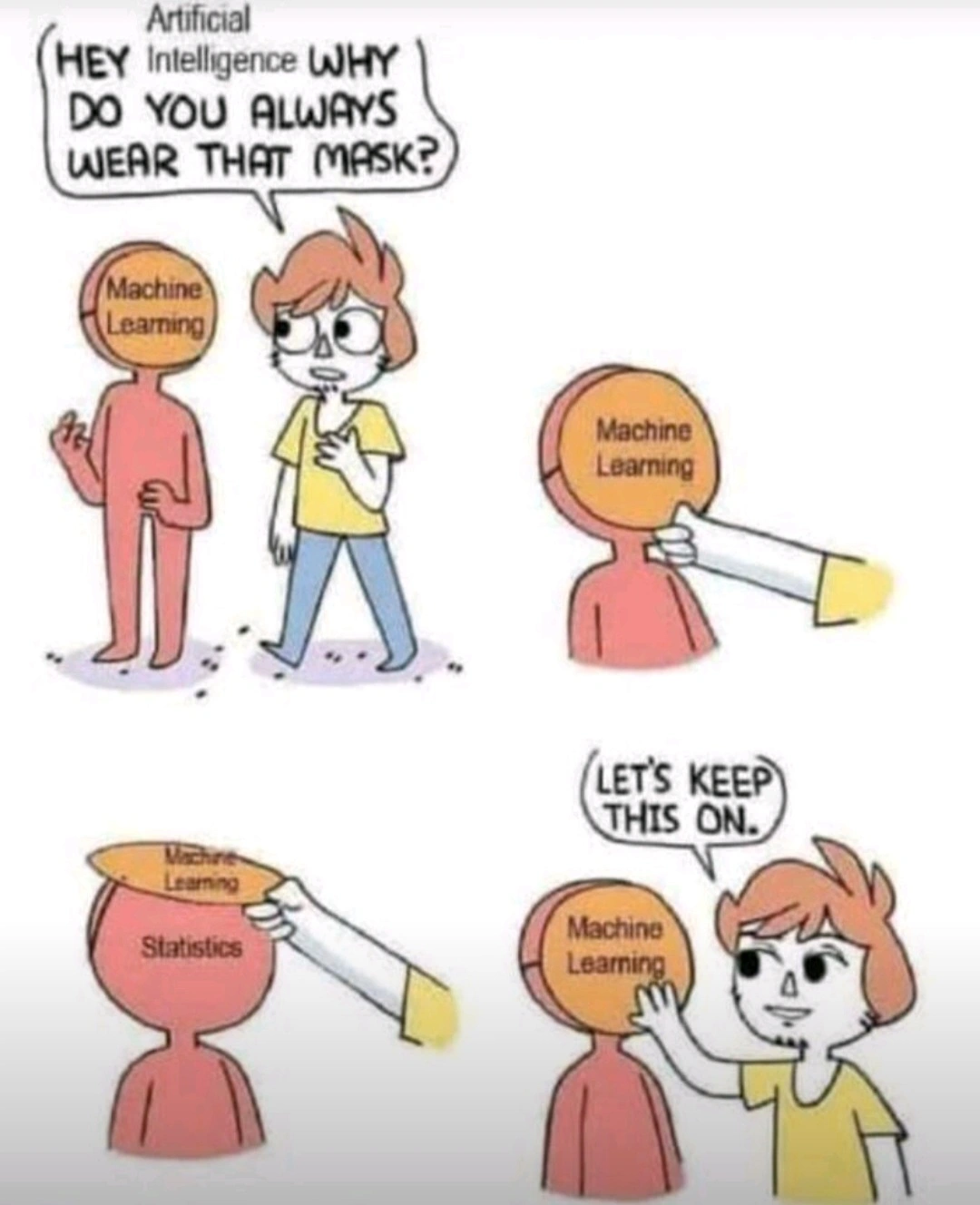this post was submitted on 08 Jul 2024
842 points (96.8% liked)
Science Memes
10340 readers
908 users here now
Welcome to c/science_memes @ Mander.xyz!
A place for majestic STEMLORD peacocking, as well as memes about the realities of working in a lab.

Rules
- Don't throw mud. Behave like an intellectual and remember the human.
- Keep it rooted (on topic).
- No spam.
- Infographics welcome, get schooled.
Research Committee
Other Mander Communities
Science and Research
Biology and Life Sciences
- [email protected]
- [email protected]
- [email protected]
- [email protected]
- [email protected]
- [email protected]
- [email protected]
- [email protected]
- [email protected]
- [email protected]
- [email protected]
- [email protected]
- [email protected]
- [email protected]
- [email protected]
- [email protected]
- [email protected]
- [email protected]
- [email protected]
- [email protected]
- [email protected]
- [email protected]
- [email protected]
- [email protected]
- !reptiles and [email protected]
Physical Sciences
- [email protected]
- [email protected]
- [email protected]
- [email protected]
- [email protected]
- [email protected]
- [email protected]
- [email protected]
- [email protected]
Humanities and Social Sciences
Practical and Applied Sciences
- !exercise-and [email protected]
- [email protected]
- !self [email protected]
- [email protected]
- [email protected]
- [email protected]
Memes
Miscellaneous
founded 2 years ago
MODERATORS
you are viewing a single comment's thread
view the rest of the comments
view the rest of the comments

The explanation is not that simple. Some model configurations work well. Others don’t. Not all continuous and differentiable models cut it.
It’s not given a model can generalize the problem so well. It can just memorize the training data, but completely fail on any new data it hasn’t seen.
What makes a model be able to see a picture of a cat it has never seen before, and respond with “ah yes, that’s a cat”? What kind of “cat-like” features has it managed to generalize? Why does these features work well?
When I ask ChatGPT to translate a script from Java to Python, how is it able to interpret the instruction and execute it? What features has it managed to generalize to be able to perform this task?
Just saying “why wouldn’t it work” isn’t a valid explanation.